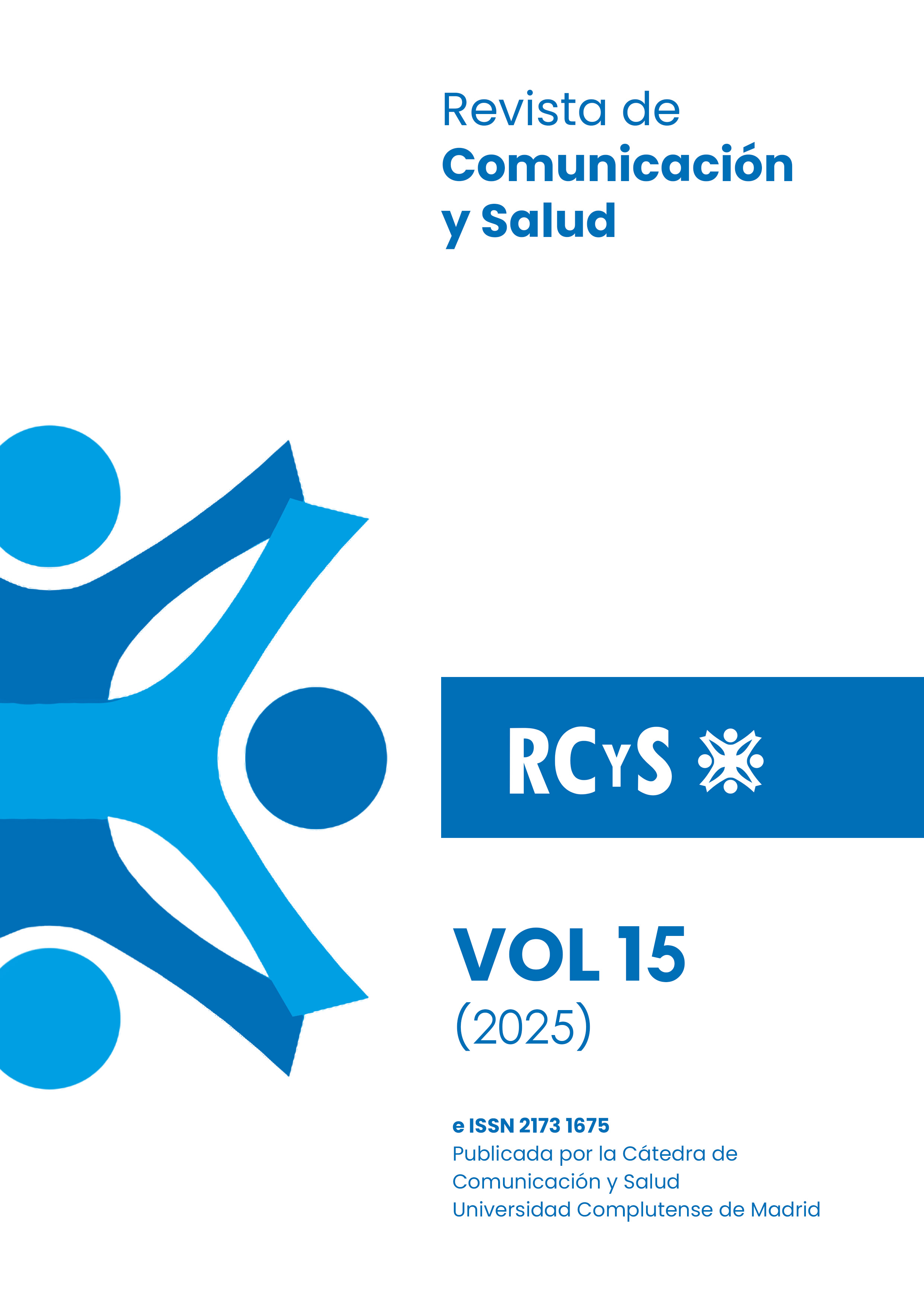The role of digital technologies within physician-patient relationships
DOI:
https://doi.org/10.35669/rcys.2025.15.e362Keywords:
Doctor-patient relationship, Digital Transformation, Digital Technologies, Health, COVIDAbstract
Introduction: Digital transformation, accelerated by the COVID-19 pandemic, has profoundly reshaped the doctor-patient relationship through the incorporation of technologies such as telemedicine and remote monitoring devices. Methodology: The analysis is based on the theoretical framework of the diffusion of innovations, allowing the exploration of how various elements of the communication system influence the adoption of digital technologies and sensor-based devices aimed at patients. Results: There is a growing empowerment of patients, who now have easier access to medical information and participate more actively in health-related decision-making. Recent studies also show an increase in the use of social media to seek medical information and growing trust in teleconsultations. Discussion: These changes pose significant challenges for studying doctor-patient communication, introducing new paradigms that require multidisciplinary approaches for proper understanding. Conclusions: The integration of digital technologies in the medical field not only transforms communication channels but also redefines traditional roles in healthcare, making in-depth and contextualized analysis of these processes essential.
Downloads
References
Asociación de Internet MX y Knowsy A.I. (2023). 19° Estudio sobre los Hábitos de Personas Usuarias de Internet en México 2022. https://irp.cdn-website.com/81280eda/files/uploaded/19%20Estudio%20sobre%20los%20Hai-bitos%20de%20Usuarios%20de%20Internet%20en%20Mei-xico%202023%20.pptx.pdf
Asociación Médica Mundial. (2017). Declaración de Ginebra. https://www.wma.net/es/policies-post/declaracion-de-ginebra/
Corvellec, H. (Ed.). (2013). What is theory? Answers from the Social and Cultural Sciences. Liber CBS Press.
Diamandis, P. H. y Kotler, S. (2015). Bold: how to go big, create wealth and impact the world. Simon & Schuster.
Emanuel, E. J. y Emanuel, L. L. (1999). Cuatro modelos de la relación médico paciente. En A. Couceiro Vidal (Ed.), Bioética para clínicos (109-126). Triacastela. https://medfam.fmposgrado.unam.mx/wp-content/uploads/2023/06/Emanuel-y-Emanuel_-4-modelos-de-RMP_esp.pdf
Fundación Mexicana para la Salud. (2022). El Médic@ Digital en México 2022. https://funsalud.org.mx/el-medic-digital-en-mexico-2024/
Martínez Montauti, J. (2018). La relación médico-paciente. Universitat de Barcelona Edicions.
Norma Oficial Mexicana NOM-024-SSA3-2012, Sistemas de información de registro electrónico para la salud. Intercambio de información en salud. 30 de noviembre de 2012. Diario Oficial de la Federación.
De Propris, L. y Bailey, D. (2020). Industry 4.0 and regional transformations. Routladge. https://doi.org/10.4324/9780429057984 DOI: https://doi.org/10.4324/9780429057984
Pérez Tamayo, R. (2003). De la magia primitiva a la medicina moderna (2da. ed.). Fondo de Cultura Económica.
Pongtanalert, K. y Ogawa, S. (2015). Classifying user-innovators – An approach to utilize user-innovator asset. Journal of Engineering and Technology Management, 37, 32-39. https://doi.org/10.1016/j.jengtecman.2015.08.005 DOI: https://doi.org/10.1016/j.jengtecman.2015.08.005
Rogers, E. M. (2003). Diffusion of Innovations (5ta ed.). Free Press.
The Well Mind Center of San Antonio. (s.f.). A Brief History of Neurofeedback. https://www.wellmindsa.com/neurofeedback/a-brief-history-of-neurofeedback/
Downloads
Published
How to Cite
Issue
Section
License
Copyright (c) 2024 Francisco Javier Morales Hernández

This work is licensed under a Creative Commons Attribution-NonCommercial 4.0 International License.
Disclaimer: As of 2023, RCyS is licensed under the Creative Commons Attribution-NonCommercial 4.0 International License (CC BY-NC 4.0).
Articles from 2011 to 2022 are under a Creative Commons CC BY 4.0 License that allows copying and redistributing the material in any medium or format, remixing, transforming and building upon the material for any purpose, including commercial.
We also inform that RCyS is adhered to the Declaration of Berlin.






